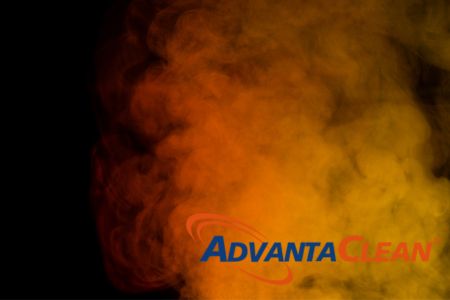Eliminating Unpleasantness: Smoke and Odor Removal by AdvantaClean
Professional Approach to a Lingering Problem
Recovery from fire damage can be a long and complicated journey. The experts chosen as restoration partners must master the standards of the Institute of Inspection, Cleaning and Restoration Certification (IICRC) in multiple restoration services. Contaminated water extraction and structural drying, debris cleanup and disposal, and toxic residue removal are the primary tasks completed during most fire and smoke mitigation and remediation projects. The ultimate objective of these efforts is to restore properties to their pre-disaster conditions. A crucial aspect of achieving a successful outcome involves thorough surface cleaning and eliminating the lingering smoke odors that are common after a fire. AdvantaClean is uniquely qualified to remove visible fire residues and eradicate unpleasant smoke odors.
What Makes Some Smoke Odors So Unpleasant?
- Incomplete Combustion
If you enjoy the smell of a fireplace or camping or patio fire pit, the stench remaining after a household blaze will be shocking. Well-dried firewood, when tended carefully, burns nearly completely. Smoke is minimal, and the aromas are pleasing. The malodors after a home burns occur partly because the combustion of the affected building materials and contents is incomplete.
- Chemical Changes from Heat and Flames
All structures, fixtures, household goods, and personal property are in danger of becoming fuel for the fire, melting and burning. Tiny particles of the fire’s fuel float on hot air currents, giving the smoke its color and exposing occupants to a broad range of hazardous vapors and solid substances. Treated wood, plastics, rubber, textiles, and more go up in smoke. The heat and burning cause chemical changes in previously “safe” items, unleashing chemicals that are hazardous to health and corrosive to surfaces.
- Protein Residues
Kitchen fires are the most common in homes and pose particularly challenging issues. The “soot” from a kitchen fire consists of dehydrated food proteins, oils, and greases. When these substances surpass their “smoking point,” these proteins and oils become rancid, creating incredibly awful smells. The residues produced by a kitchen fire are mist-like, covering surfaces throughout a home with a transparent, foul-smelling coating that is very hard to remove.
- Why Is Surface Cleaning Inadequate for Smoke Odor Control?
The chemically altered tiny particles or soot created during a fire carry terrible smells. Although AdvantaClean technicians are highly efficient at cleaning soot from surfaces, odor-bearing soot particles act in ways that make total removal difficult to impossible. Each minute bit of non-protein-based soot is rough, with jagged edges that allow it to dig into drywall, flooring, furniture, textiles, and more. The heat of the fire expands the pores of organic materials like wood, meaning that odiferous soot particles infiltrate these porous structures. Scrubbing even with the most up-to-date products AdvantaClean uses will not be enough to get the absorbed odors out of permeable materials.
What Solutions Does AdvantaClean Use for Smoke Odor Elimination?
Eliminating smoke odors is an incredibly challenging task, but it is essential to prevent the lingering smell from serving as a constant and unpleasant reminder of the crisis. The volatile compounds currently airborne or vaporizing from damaged structures or contents also continuously expose property owners and their families to hazards. AdvantaClean starts with source removal, including debris clearing and deep surface cleaning, and then moves to innovative products and techniques that detect and neutralize the odor-bearing smoke and soot, including:
- Chlorine dioxide treatment
- Ozone treatment
- Hydroxyl generator treatment

Implementing these advanced interventions necessitates the expertise of professionals, such as our skilled AdvantaClean technicians, to ensure both safety and effectiveness. The tactics work to alter the chemical composition of the remaining soot residues. Treatments eliminate the unpleasantness of persistent smoke odors by breaking down smelly compounds into their odor-free components. Neutralizing the odors is a permanent solution and does not use masking agents that can smell offensive and frequently need reapplication.